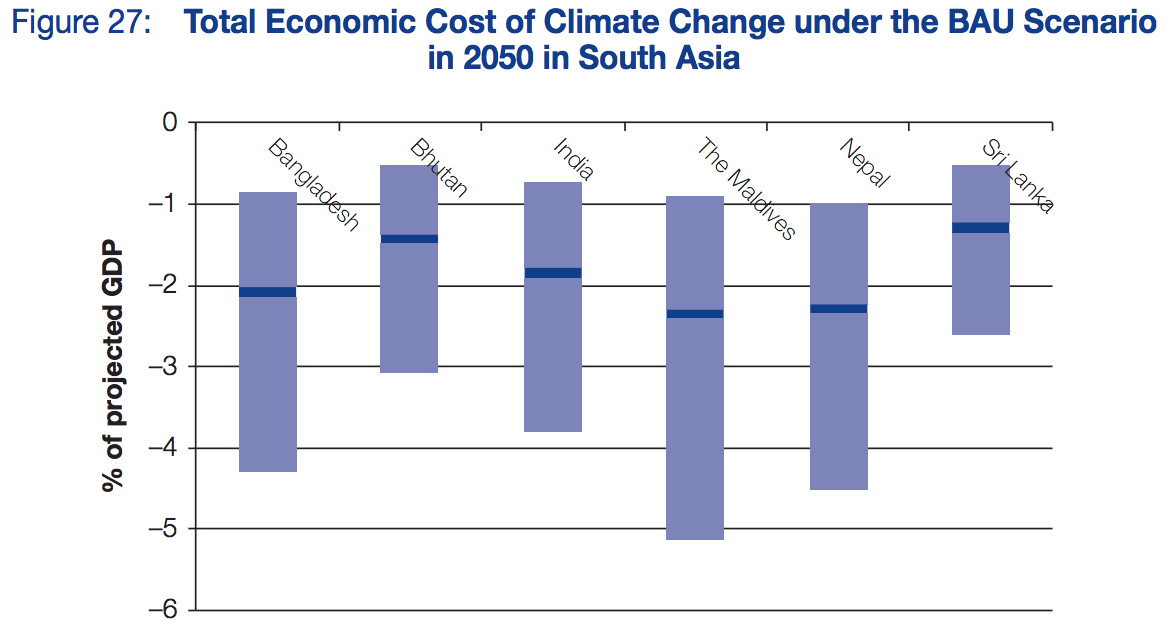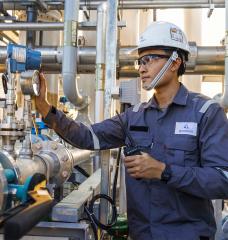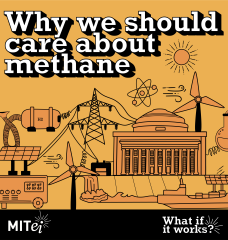
Climate change continues to have a great impact on the livelihoods of the poor. Over the coming decades, most of the growth in the world’s population will be in the Global South, where many people depend on rain-fed agriculture for their survival. Thus, the demand for livelihoods and food security in this region is on the rise. Unfortunately, women and girls in South Asian countries are more severely affected by climate change than men. They constitute the majority of the agricultural labor force in small-scale and subsistence farming and encounter its effects at first hand. When food is scarce, female family members often get the smallest portions, thus compromising their health and well-being.

Photo: Asia News
More and more people are becoming highly vulnerable to climate change. A forthcoming World Bank report indicates—finding South Asia as a hotspot—that average temperatures in the region have increased in the last sixty years and will continue rising. Rainfall is becoming more erratic: some areas will experience more droughts, others more rain.

Source: Carbon Brief, Climate change a major challenge to South Asia’s economic development
Climate Resilient Community
Community resilience refers to the persistent ability of a community to exploit available resources (energy, communication, transportation, food, etc.) to respond to, withstand, and recover from adverse situations (e.g. economic collapse to global climate change risks) [1]. This allows for the adaptation and growth of a community after any climate-induced disaster strikes [2]. Communities that are climate resilient are able to minimize any impact due to a disaster caused by climate change, making the return to normal life as effortless as possible.
In other words, climate resilience can be generally defined as the capacity for a socio-ecological system to: (1) absorb stresses and maintain function in the face of external stresses imposed upon it by climate change and (2) adapt, reorganize, and evolve into more desirable configurations that improve the sustainability of the system, leaving it better prepared for future climate change impacts [3], [5].
I argue that by investing in community capitals and implementing a community resilience plan, a community can come together and overcome any climate-related disasters while rebuilding physically and economically.
How Community Capitals Build Climate-Resilient Communities
In my view, a climate-resilient community has sufficient assets and resources that facilitate its coping capacity with long-term changes. Thus, a balanced combination of various ‘community capitals’ enhances the resilience of a community to disturbances including climate change disruptions. Community capitals are resources of a community that are invested in the collective wellbeing of the entire community. Social scientists frequently mention human capital (i.e., an individual’s innate and acquired personal attributes, such as work skill, education, knowledge, and health, which contribute to the ability to earn a living and strengthening the community), cultural capital (i.e., community’s worldview, values, and norms), financial or economic capital (i.e., material property, wealth, and other financial sources available to be invested for business development, civic, and social enterprises), physical or built capital (i.e., physical infrastructure of a community including machinery, homes, factories, water, roads, transport, shelter, and energy), political capital (i.e., community members’ access to resources, power, and power brokers), environmental or natural capital (i.e., availability and sustainable use of natural resources for human consumption), and social capital (i.e., the extent of social networks).
As noted earlier, a resilient community has distinct features with regard to how it utilizes its resources in addressing climate shocks. A community’s resilience depends on how rich the community is in terms of various capitals; how quickly and how well it recovers from the losses through effective use of resources and capitals; how the whole community works as a unified team; how committed and persevering its members are; how well it identifies its barriers and facilitators; how well it is horizontally and vertically connected to other groups and institutions, and how well it uses these connections; and how dynamic and strategic are its community leaders. All of the above characteristics can be termed as the resilience dimensions of a community.
Community capitals serve as the working ground for both climate change impacts and resilience dimensions. The following diagram presents schematic relations between climate change impacts, community capitals, and community resilience. Though this sketch does not imply a rigid flow of events or outcomes, it depicts how climate change dimensions have overall negative impacts on community capitals and resilience dimensions have positive impacts. The net result of the impacts of these two dimensions on community capitals is indicative of the extent of community resilience to climate change.

Source: Kais, S., & Islam, M. (2016)
In conclusion, it can be said that climate change generates risk to human society in a multitude of intermingled ways, including long-lasting changes in mean temperatures, precipitation, and other climate parameters, as well as secondary effects, such as sea-level rise, temporal shifts in seasonality culminating into extreme and abnormal conditions at local levels, and increased climate extremes that can elicit floods, cyclones, fires and other natural disasters. Thus, community-level resilience is created and re-created through constant investment or reorganization of the important community capitals.
References:
[1] Bosher, Lee; Chmutina, Ksenia (April 3, 2017). Disaster Risk Reduction for the Built Environment. 111 River Street. Hoboken, NJ 07030: John Wiley & Sons. p. 32. ISBN 9781118921500.
[2] Fran H., Norris; Susan P., Stevens (March 2008). "Community Resilience as a Metaphor, Theory, Set of Capacities, and Strategy for Disaster Readiness". American Journal of Community Psychology. 41: 127–150. doi:10.1007/s10464-007-9156-6.
[3] Folke, C (2006). "Resilience: The emergence of a perspective for social-ecological systems analyses". Global Environmental Change. 16 (3): 253–267. doi:10.1016/j.gloenvcha.2006.04.002.
[4] Kais, S., & Islam, M. (2016). Community capitals as community resilience to climate change: conceptual connections. International journal of environmental research and public health, 13(12), 1211.
[5] Nelson, Donald R.; Adger, W. Neil; Brown, Katrina (2007). "Adaptation to Environmental Change: Contributions of a Resilience Framework" (PDF). Annual Review of Environment and Resources. 32: 395–419.






